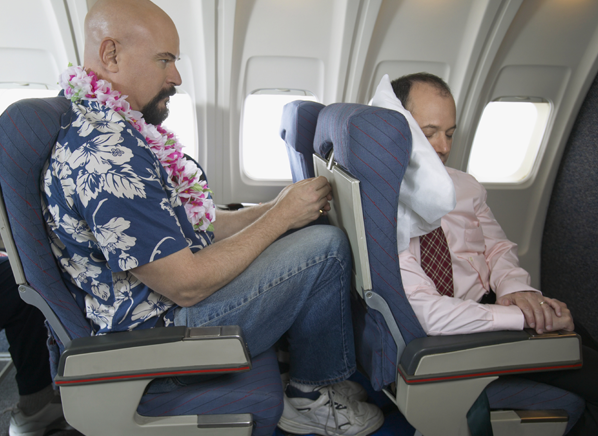
Feeling the squeeze? All of the nation’s airlines juice more cash out of each passenger carried so far this year.
Did you feel that? Is your annual travel budget feeling a bit pinched? For the first time in years, airlines have found a way to make more money off each individual flier.
Susan Carey, of The Wall Street Journal, reports that every U.S. airline is expecting increases in unit-revenue this year. Delta is expected to post its first year-over-year gain since 2014, Carey writes.
Lower fares, higher prices?
American, Delta and United have all been advertising new fares at bargain basement prices. Meanwhile, they are squeezing more cash out of the average customer. A dive into this paradox might reveal some of the impetus behind perplexing and controversial “basic economy” fares.
“Big airlines are expanding “basic economy fares to compete with discounters,” Carey writes. Does that make sense?
Capacity at major carriers, unlike discount carriers, has not increased dramatically in recent years. American, Delta and United have been making efforts to cut seat capacity at a fairly regular tick since at least 2013. Larger aircraft, like Boeing 747s and 757s, are being replaced on the same routes by smaller aircraft, like Boeing 777s and 737s.
Big airlines aren’t increasing profits by making fares more affordable and carrying a greater share of the travelling public. They are now driving profits by raking in more cash from each passenger.
Hidden costs
How do basic economy fares fit into this? As Gary Leff, at View From the Wing, reported in January, basic economy fares are masking fare increases:
-
“1. This isn’t about offering you lower fares. The major carriers have already largely been matching the lowest fares in the market.
-
2. Basic economy is a way of moving some passengers who purchase those fares today to buy more expensive fares instead.”
Last month I wrote about the deception that occurs when these basic economy fares mix and mingle in search engines. The basic fares act like a paper tiger, giving flight shoppers the impression that prices are lower than they actually are. On United and American, the difference in price between a basic economy fare and a higher standard economy fare is often less than the bag fee basic economy fliers are forced to pay — if they want to bring anything bigger than a backpack with them.
There is no discount in the world of basic economy, just a fare that appears $20 cheaper. The actual fare is higher than it used to be, and higher than competitors non-basic fares on the same routes.
The big three all expect to earn 3 to 6-percent higher unit-revenue — or cash collected per seat — by year’s end, The Journal reports. Many carriers are posting record or near-record profit figures.
In my column I called basic economy fares a deceptive business practice. Those “low fares” underscore a big payoff in the boardroom.
Related content
- Comparing the Difference Between American, Delta and United Basic Economy
- Delta to Delay A350 deliveries, Slow Growth
- Delta to Replace 747s
The responses below are not provided or commissioned by the bank advertiser. Responses have not been reviewed, approved or otherwise endorsed by the bank advertiser. It is not the bank advertiser's responsibility to ensure all posts and/or questions are answered.